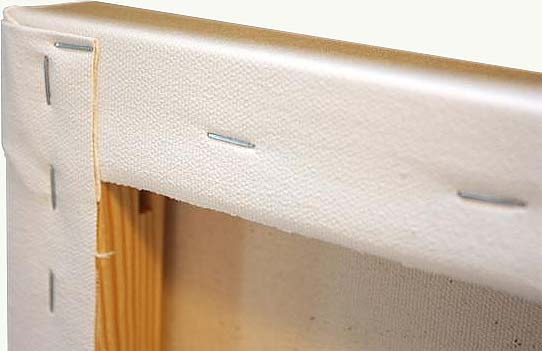Instruction
1
For starters, responsible approach to the selection of material for the canvas different materials in different ways are primed and also have different effects on the texture of the future picture. Do not buy rare canvas and very thin cloth (calico, cotton). The most successful variant is to buy hemp hemp canvas and linen.
2
Buy fabric medium thickness and a sufficient density for successful gluing. Canvas should not be too rough and too smooth.
3
Stretch canvas on a frame, make sure it does not bend and did not warp. A stretched canvas should be elastic and durable, it needs not to cave under the brush and not get wrinkled.
4
Start the stretch of the canvas with fixing the corners on the stretcher temporary nails. Then fixate the Central point of the four sides of the canvas first short side then the long.
5
Stretch the canvas canvas from the middle to the corners, and only once the stretch is strong, finally hammer the studs in the subframe. Use conic furniture nails and drive them to the subframe in a staggered manner to prevent the cracking of the subframe.
6
After stretching the canvas get temporary nails, and glued the canvas to make it airtight and to close the pores and holes in the fabric. Sizing prepares the canvas to the primer and insulates the tissue from the effects of oil paints.
7
In some cases, the artists stretched on a frame ready, store-bought primed canvas. In this case, it is impossible to wet the canvas before you stretch – primed canvas should be stretched dry.
8
For proper sizing of the canvas need to apply several layers of glue – from two to four, causing the protective film from one side or another. Use the adhesive solution 5%, with a gelatinous consistency.
9
Apply glue with a wide brush or spatula on stretched canvas, removing excess with a knife, putting it perpendicular to the edge of the canvas. The glue should cover the canvas, but not to penetrate it the opposite direction.
10
Dry the canvas after the first sizing at room temperature and retry the operation. Then sand the surface with sandpaper, smoothing it.
11
Continue to glue the canvas using liquid glue with a plasticizer (glycerin or honey).
12
After sizing start to Prime the canvas. Primer applied on canvas with a wide brush or wide spatula. Do not apply additional layers of soil on one and the same place.
13
Dry the first coat of primer, and then apply a second and third, if necessary, using liquid primer.
14
Dry the canvas and check whether its texture is uniform and smooth. Now your canvas is ready.
Note
Canvas, stretcher, primed canvas. Canvas is an impact on the quality of the painting. It should be able to choose and to ground. Beginners are recommended canvas of medium thickness tissue. Primed canvas to oil is not absorbed into the fabric, the colors didn't juchli and did not penetrate through the pores is not the reverse side of the picture. The soil is the link between the canvas and paints.
Useful advice
Before you start to Prime the canvas, you have to choose. The choice of canvas, which is the basis, very important question, because if you take the substandard basis, it is well not sarantuya and also the type of canvas or other fabric (canvas, rahoi, canvas, calico and so on) will be along with the soil to influence the texture paint layer. You should not take a lot of time wash the old canvas, a canvas with rare binding, canvas, calico...


